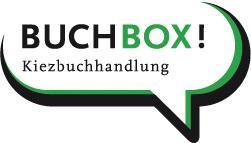Beschreibung
1. Contents of these proceedings. These proceedings contain most of the papers which were presented at the NATO ARW (Advanced Research Workshop) on "Large Scale Computations in Air Pollution Modelling". The workshop was held, from June 6 to June to, 1998, in Residence Bistritza, a beautiful site near Sofia, the capital of Bulgaria, and at the foot of the mountain Vitosha. 2. Participants in the NATO ARW. Scientists from 23 countries in Europe, North America and Asia attended the meeting and participated actively in the discussions. The total number of participants was 57. The main topic of the discussions was the role of the large mathematical models in resolving difficult problems connected with the protection of our environment. 3. Major topics discussed at the workshop. The protection of our environment is one of the most important problems facing modern society. The importance of this problem has steadily increased during the last two-three decades, and environment protection will become even more important in the next century. Reliable and robust control strategies for keeping the pollution caused by harmful chemical compounds under certain safe levels have to be developed and used in a routine way. Large mathematical models, in which all important physical and chemical processes are adequately described, can successfully be used to solve this task.
Inhalt
InhaltsangabePreface. Acknowledgements. 1. Parallel algorithms for some optimization problems arising in air pollution modeling; J.L. Alonso, A.N. Alexandrov. 2. Modeling of global and regional transport and transformation of air pollutants; A.E. Aloyan. 3. Long-term calculations with large air pollution models; C. Ambelas, et al. 4. Parallel numerical simulation of air pollution in Southern Italy; G. Barone, et al. 5. Real time predictions of transport, dispersion and deposition from nuclear accidents; A. Bastrup-Birk, et al. 6. Mixing height in coastal areas - experimental results and modelling, A review; E. Batchvarova. 7. On some adaptive numerical methods for linear advection equations; R. Bochorishvili. 8. A parallel iterative scheme for solving the convection diffusion equation on distributed memory processors; L.A. Boukas, N.M. Missirlis. 9. Data Assimilation and HPCN-examples of the LOTOS model; P.J.H. Builtjes. 10. Computational challenges of modeling interactions between aerosol and gas phase processes in large scale air pollution models; G.R. Carmichael, et al. 11. ETEX: a European tracer experiment; observations, dispersion modelling and emergency response; H. van Dop, et al. 12. Parallel 4D-variational data assimilation for an Eulerian chemistry transport model; H. Elbern, et al. 13. Approaches for improving the numerical solution of the advection equation; M.V. Galperin. 14. Application of parallel algorithms in an air pollution model; K. Georgiev, Z. Zlatev. 15. Aerosol modelling within the EURAD Model System: Developments and applications; H. Hass, et al. 16. Calculation of ozone and other pollutants for summer 1996: The influence of lateral boundary concentrations on ozone levels'; J.E. Jonson, et al. 17. Atmospheric mechanisms of admixtures transfer; K.A. Karimov, R.D. Gainutdinova. 18. The varying scale modelling of air pollution transport; V.K. Kouznetsov, et al. 19. Deterioration on historic buildings due to air pollution and some difficulties during their restoration works; A.G. Kucukkaya. 20. Modelling of the long-term atmospheric transport of heavy metals over Plland; A Mazur. 21. Pollution transmission in the air; Cs. Mészáros, et al. 22. Bayesian heuristic approach (BHA) and applications to optimization of large scale discrete and continuous models; J. Mockus. 23. Nonlinear assignment problems; P.M. Pardalos, et al. 24. Some experiments in connection with neural and fuzzy modelling for air pollution problems; G.M. Sandulescu, M. Bistran. 25. Advanced operational air quality forecasting models for urban and regional environments in Europe: Madrid application; R. San José, et al. 26. Adaptive orthonormal systems; Bl. Sendov. 27. On some flux-type advection schemes for dispersion modelling application; D. Syrakov, M. Galperin. 28. A study of sulfur dioxide distribution over Ýstanbul, Turkey, and preliminary results of neural network analysis; M. Tayanç, A. Saral. 29. Krylov subspace methods for the solution of large systems of ODE's; P.G. Thomsen, N.H. Bjurstrøm. 30. The use of 3-D adapti
Informationen gemäß Produktsicherheitsverordnung
Hersteller:
Springer Verlag GmbH
juergen.hartmann@springer.com
Tiergartenstr. 17
DE 69121 Heidelberg
